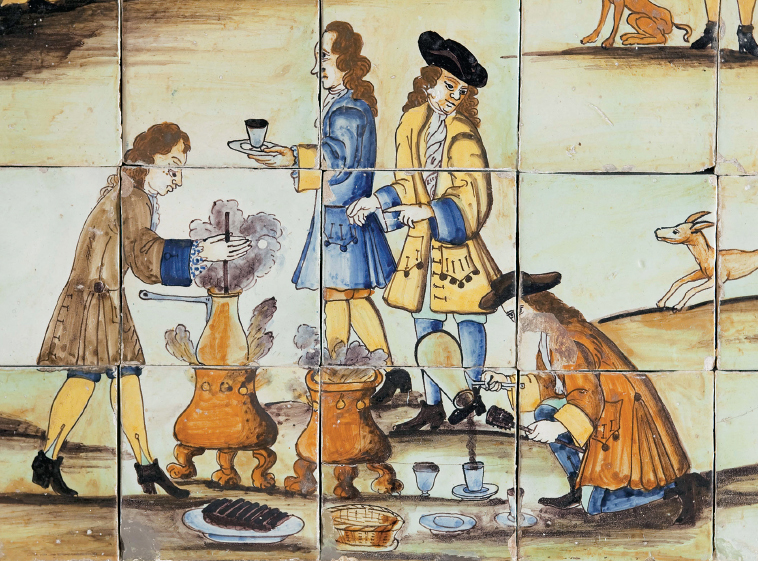How did increasing literacy and new patterns of consumption affect people’s lives?

Chocolate DrinkingThese Spanish tiles from 1710 illustrate the new practice of preparing and drinking hot chocolate. Originating in the New World, chocolate was one of the many new foods imported to Europe in the wake of the voyages of discovery. The first Spanish chocolate mills opened in the mid-seventeenth century, and consumption of chocolate rapidly increased. The inclusion of these tiles in the decoration of a nobleman’s house testifies to public interest in the new drink. (Courtesy, Museu de Ceramica. Photo: Guillem Fernandez-Huerta)
BBECAUSE OF THE NEW EFFORTS IN EDUCATION, basic literacy was expanding among the popular classes, whose reading habits centered primarily on religious material but who also began to incorporate more practical and entertaining literature. In addition to reading, people of all classes enjoyed a range of leisure activities including storytelling, fairs, festivals, and sports.
One of the most important developments in European society in the eighteenth century was the emergence of a fledgling consumer culture. Much of the expansion took place among the upper and upper-middle classes, but a boom in cheap reproductions of luxury items also opened doors for people of modest means. This “consumer revolution,” as it has been called, created new expectations for comfort, hygiene, and self-expression, thus dramatically changing European daily life in the eighteenth century.
